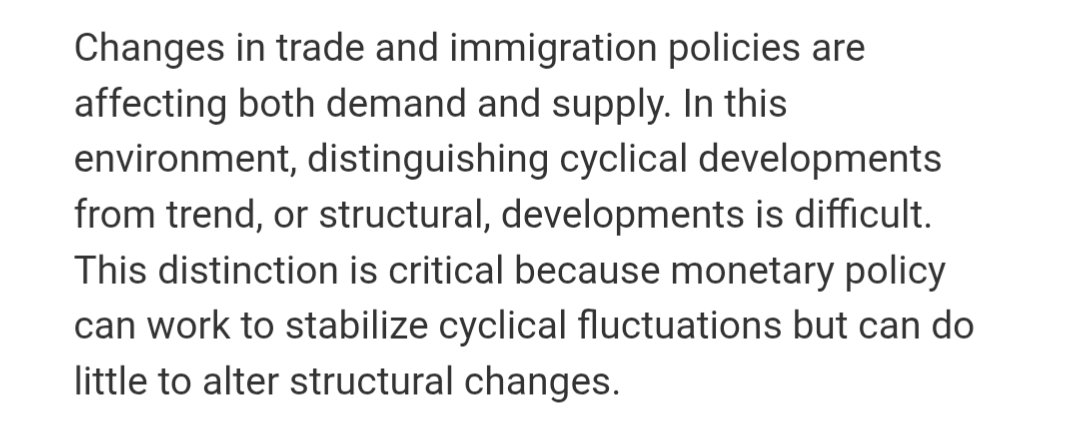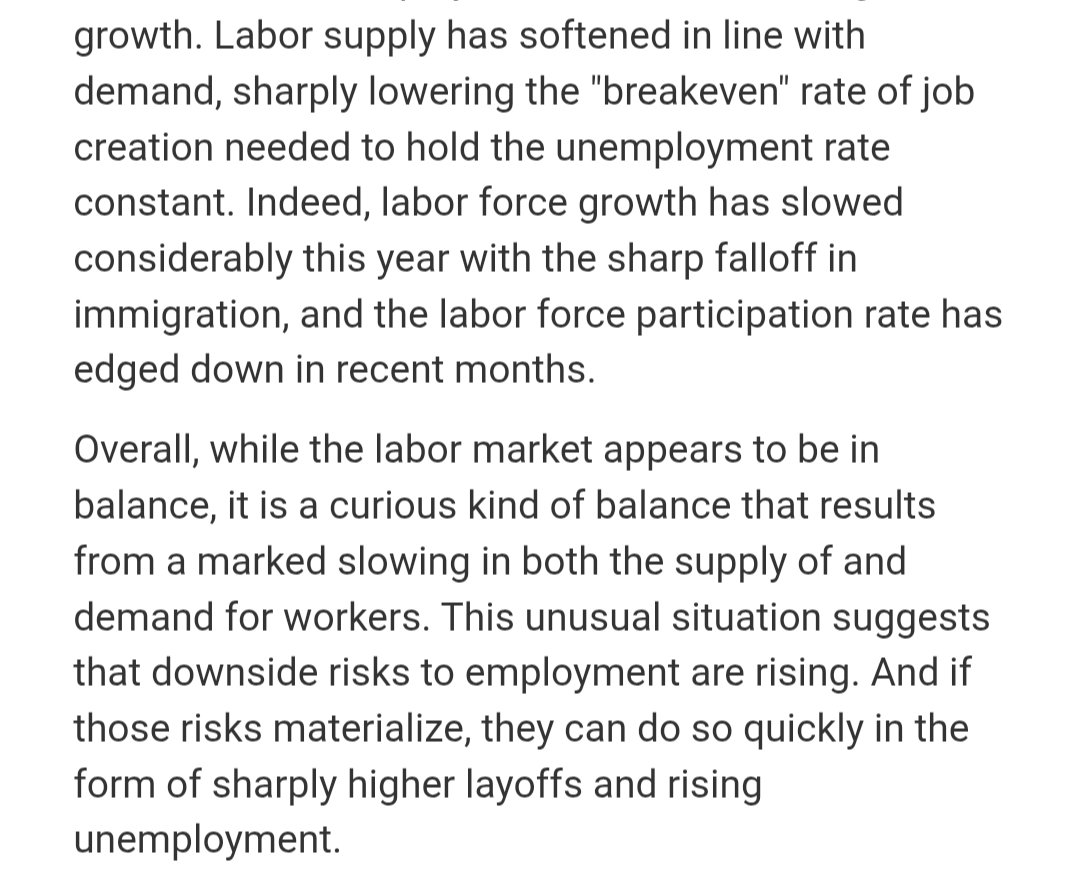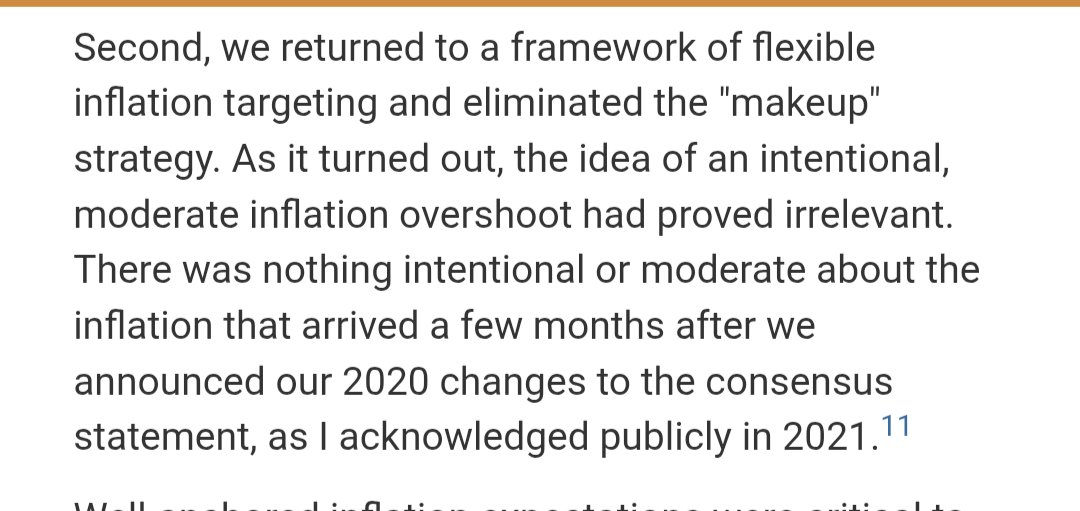As promised, a thread on my approach to building a rules-based model. There's no perfect way, you won't get a blueprint of what I do, just how I approach a systematic trading model. I hope this provides some value in constructing a strategy, rules-based or not!
Let's go!
Let's go!

First, let's define a systematic approach. You're essentially taking defined and measurable inputs and packaging them together to form coherent and consistent rules to establishing positions in various market instruments.
Ever notice how some traders refer to their "system" even
Ever notice how some traders refer to their "system" even
if they're not actually using a computer model? Bc that's all it is. You have rules, you have a style, you ADHERE to it. Models, systems, rules-based, it's all just a way to formalize and codify your approach to trading.
How complex you get is really up to you and your style.
How complex you get is really up to you and your style.
Without establishing consistency, you can never really evaluate your methodology for trading through a lens of replication. And this is what it's about; observable, repeatable, consistent behaviour.
At least, that's how I view it! So, what do I do, how and why? Let's dive in.
1/
At least, that's how I view it! So, what do I do, how and why? Let's dive in.
1/
Why did I even build a systematic approach to trading?
Because my macro trading sucked.
I won some, i lost some. I chickened out and missed wins, i went too hard and got kicked in the balls (Fuck you BTPs). I did some of this, i did some of that. Did I have a process? Eh.
2/
Because my macro trading sucked.
I won some, i lost some. I chickened out and missed wins, i went too hard and got kicked in the balls (Fuck you BTPs). I did some of this, i did some of that. Did I have a process? Eh.
2/
Biggest trap with macro trading, esp with a wide mandate is LACKING FOCUS. Focus and refine your scope. It's better to do a few things well than a lot in mediocre fashion.
Start with style. Are you bullish? Bearish? Agnostic? I come from fixed income. I'M BEARISH AS FUCK.
3/
Start with style. Are you bullish? Bearish? Agnostic? I come from fixed income. I'M BEARISH AS FUCK.
3/
But obviously, I keep getting my ass kicked. I didn't want any of that. So I built a model to trade for me based on the things I look at and know to possibly be empirically true, even if my heart cannot agree.
Pretty quickly, backtests showed me permabearishness sucks balls.
4/
Pretty quickly, backtests showed me permabearishness sucks balls.
4/
So, I know I want to be agnostic. If the market is risk-on, I wanna be risk-on. If it's risk-off, I want to be risk-off OR just not risk-on.
I have something I THINK can give me signals. If you see my previous tweets, it's how I look at cross-asset vol.
Simple enough right?
5/
I have something I THINK can give me signals. If you see my previous tweets, it's how I look at cross-asset vol.
Simple enough right?
5/
No, not really.
6/
6/
So I can see that:
1. Permabears die
2. I want to trade directionally
3. But be able to either short risk appropriately or exit long risk.
The two things I need for something like this and honestly, any half-good rules based strategy is LIQUIDITY & RISK-MANAGEMENT.
7/
1. Permabears die
2. I want to trade directionally
3. But be able to either short risk appropriately or exit long risk.
The two things I need for something like this and honestly, any half-good rules based strategy is LIQUIDITY & RISK-MANAGEMENT.
7/
I'm not a quant. My math & stats suck. I'm objectively dumb by many standards. But I'm a trader (also suck). And trading is about staying in the game, not winning everyday.
The best traders out there have the best risk management.
This is where you start building from.
8/
The best traders out there have the best risk management.
This is where you start building from.
8/
What if I told you that my win ratio this year was barely above 60%? And that 15 years of backtested performance shows a win ratio of ~52%?
Yet this year gross return is 38%+ and that 52% of backtested win ratio comes with 29% annualized returns?
How? Risk management.
9/
Yet this year gross return is 38%+ and that 52% of backtested win ratio comes with 29% annualized returns?
How? Risk management.
9/
I have defined stops. I have defined target profits. Can they change dynamically? Yes. But are they always there? Absolutely.
Simple example: i will risk $1 for $5 of profit.
I could win once and lose 5 times to end up breakeven. And that would be a win ratio of just 16.7%
10/
Simple example: i will risk $1 for $5 of profit.
I could win once and lose 5 times to end up breakeven. And that would be a win ratio of just 16.7%
10/
(P.s. don't run a model with 17% win ratio)
Do you start to see how firmly defining a risk/reward setup contributes to a winning strategy and higher sharpe/sortino/etc?
Risk management should be the first thing you build, not the last imo.
11/
Do you start to see how firmly defining a risk/reward setup contributes to a winning strategy and higher sharpe/sortino/etc?
Risk management should be the first thing you build, not the last imo.
11/
So now I know some more about how I want to do things:
1. I want to trade directionally but agnostically.
2. I need liquidity for my strat
3. I need strong risk management
What do I need next? Well...some evidence you're on the right track. Backtesting.
12/
1. I want to trade directionally but agnostically.
2. I need liquidity for my strat
3. I need strong risk management
What do I need next? Well...some evidence you're on the right track. Backtesting.
12/
Ok, give me a sec. I'm grabbing some coffee. But in the meantime, just think about whether backtests are useful or not and why. Ask yourself the same question about analogs.
brb.
13/
brb.
13/
So backtests vs reality. In-sample vs out-sample. Ex-post vs ex-ante. Why should backtests matter, if they do at all? Why do i talk about analogs as well?
My thinking goes like this - they are useful insofar as helping you understand behaviour, not results.
14/
My thinking goes like this - they are useful insofar as helping you understand behaviour, not results.
14/
Don't agree? Buy spooz at any point in the last 15 years. Add 1.5x leverage. Congrats, you've beaten the market. But that's not what we're trying to do here.
/15
/15
You must always ask a question about WHY something is happening in the context of what happened. It's why analogs to '87 or GFC often don't pan out. Because you're trying to match results, not behaviour.
Remember, the point of a systematic approach is to formalize behavior.
16/
Remember, the point of a systematic approach is to formalize behavior.
16/
I use backtests to understand WHY my model acted THAT way in THAT market. Are my rules & factors consistent then as they are now? Bc if they're not then performance figures are useless!
It's why you can build perfect models in backtesting and see it fail with live capital.
/17
It's why you can build perfect models in backtesting and see it fail with live capital.
/17
Embrace imperfection. Because if not you fall into the trap of overfitting. There is a high likelihood you started with a signal that you are observing to be true TODAY. Now you want to make your backtests wicked smaht so you adjust for historical patterns.
/18
/18
But what you've now done is neutered your model today for the sake of pretty numbers in the past. Don't make no sense.
And that's why it comes back to consistent, repeatable, observable behaviour. I'm not saying your inputs have to be static, hell no! A ton of my factors are
/19
And that's why it comes back to consistent, repeatable, observable behaviour. I'm not saying your inputs have to be static, hell no! A ton of my factors are
/19
dynamic in nature that adjust with the market cycle. But you need to be using inputs that were relevant then and still are now.
I won't go into machine learning and AI because, well I know nothing about them. But I do know that I won't use them.
/20
I won't go into machine learning and AI because, well I know nothing about them. But I do know that I won't use them.
/20
FOR ME, this is still a discretionary style that I am formalising and codifying. But I need to understand it, I need to be able to observe and refine it myself.
I will not be as fast, I will not be as smart.
That's fine.
/21
I will not be as fast, I will not be as smart.
That's fine.
/21
So now i know the following:
1. I want to trade directionally but agnostically.
2. I need liquidity for my strat
3. I need strong risk management
4. Observable & consistent inputs over time
Now, assuming you have a strat returning good results. You can start to refine.
/22
1. I want to trade directionally but agnostically.
2. I need liquidity for my strat
3. I need strong risk management
4. Observable & consistent inputs over time
Now, assuming you have a strat returning good results. You can start to refine.
/22
1. Am I trading more than 1 instrument?
2. How much overall leverage am I prepared to use?
3. What portfolio volatility am i willing to bear?
4. Can I operationally handle this strategy?
/23
2. How much overall leverage am I prepared to use?
3. What portfolio volatility am i willing to bear?
4. Can I operationally handle this strategy?
/23
I do trade more than 1 instrument. I have 3 - Each have their own model, hence each have a distinct return volatility profile. They way I approach it is that those models are my assets, not the instrument themselves.
/24
/24
Bc of risk mgmt, I have transformed the return vol profile of spooz into my own version of it. I'm long my model, im not long spooz.
This is how I construct my portfolio now: I constrain leverage and port variance, and optimize for sharpe with floored portfolio return
/25
This is how I construct my portfolio now: I constrain leverage and port variance, and optimize for sharpe with floored portfolio return
/25
And that's basically it. There's obviously a ton more to it but this is how I approach things. These are some of the lessons i've learnt that I think are important building blocks for designing a strategy.
This is my model. There are many like it but this one is my own.
26/26
This is my model. There are many like it but this one is my own.
26/26
• • •
Missing some Tweet in this thread? You can try to
force a refresh



















